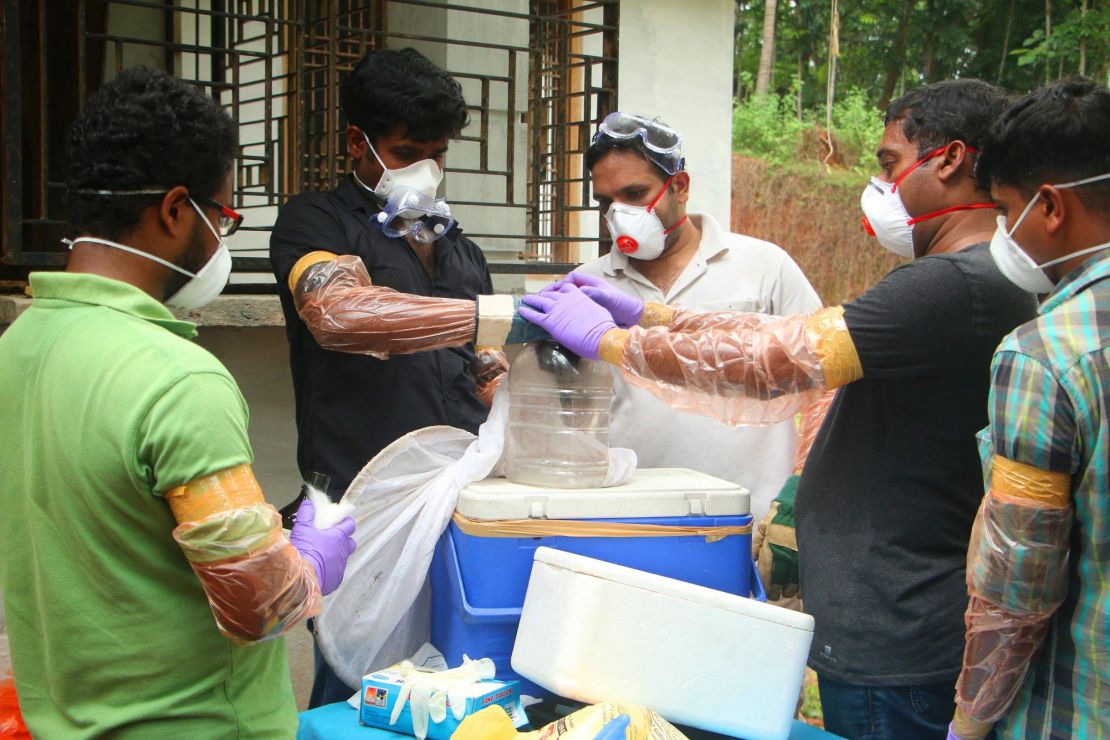India has put more than 300 people under surveillance after a 23-year-old man was diagnosed with the Nipah virus, a rare and often deadly disease.
Authorities in the southern Indian state of Kerala said Wednesday that they had identified 311 people who may have come in contact with the man and four other people displaying symptoms of the disease. All of them are under observation and have been told not to leave their homes.
“No risks are being taken with respect to this and hence we are observing people who came into contact with the patient for even a short period of time,” said Dr. V. Meenakshi, a senior state health official.
The disease has resurfaced a year after an outbreak killed 17 people. More than 230 people were tested during that outbreak, which caused widespread panic in the Northern Kerala region.
However, this time state officials said they have quickly swung into action to isolate, observe and treat anyone who may have come into contact with the virus.
‘Remain calm’
In a press conference on Tuesday, the Kerala State Health Minister K.K. Shailaja said that the 23-year-old man was in an isolation ward at a hospital in the Ernakulam district in Central Kerala and is currently in a stable condition.
She added that four other people, including two nurses who treated the patient, have been exhibiting signs of fever – a symptom of the disease – and were under strict observation. All four have been moved to an isolation ward but have not been officially diagnosed with the virus yet.
“I urge the people of Kerala to remain calm and to avoid panic,” said Shailaja.
Nipah is a zoonotic virus, meaning it is transmitted from animals to humans and has a death rate of 40% to 75% for the infected. A Nipah infection can show zero symptoms, or it can cause fatal encephalitis (inflammation of the brain), with a range of possible wide spread complications.

The natural host is a particular family of bats, Pteropodidae, which can spread the severe disease to farm animals, including pigs. According to the CDC, “transmission of Nipah virus to humans may occur after direct contact with infected bats, infected pigs, or from other NiV infected people.”
The first case in the 2018 outbreak was suspected to have been caused by fruit bats, which were discovered in an unused well at the home of the victim, according to the World Health Organization (WHO).
Initial symptoms of Nipah virus can include headaches and drowsiness, and patients can slip into a coma within days, according to the US Centers for Disease Control and Prevention.
Get CNN Health's weekly newsletter
Sign up here to get The Results Are In with Dr. Sanjay Gupta every Tuesday from the CNN Health team.
Other symptoms may include acute respiratory syndrome – in which the lungs cannot get enough oxygen to the body – and fatal encephalitis, an inflammation of the brain.
The virus was first identified during a 1998-1999 outbreak in Malaysia, where nearly 300 people were infected and more than 100 died, according to the CDC. More than 1 million pigs were euthanized to halt the spread of the illness.
The virus was named after the village of Kampung Sungai Nipah in Malaysia, where pig farmers contracted the disease.
Only a few outbreaks have happened since then, including in India and Bangladesh, according to the WHO.
